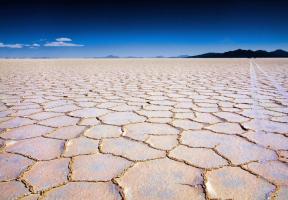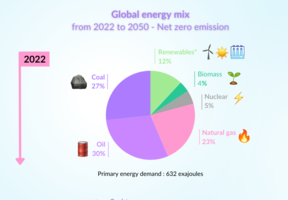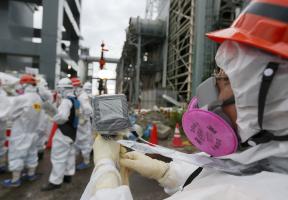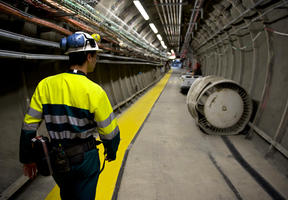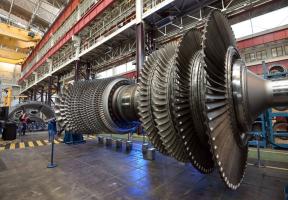Where Does Nuclear Power Stand in the world today?
10 min read
The industry is a slow-evolving industry, where results are measured over decades. It takes around 10 years to build a reactor and its operating lifetime is between 50 and 60 years. It is a sector however, that is sensitive to external events that either slow it down, like the accident in Fukushima in 2011 or a global economic crisis, or stimulate it, such as the severe disruptions to oil or gas supplies as was the case during the war raging in Ukraine since 2022. Now in 2023, it looks like nuclear is gearing up for a new revival. Here’s the state of play regarding nuclear energy in the world today.

© KAZUHIRO NOGI / AFP
At the beginning of 2023, around 440 nuclear reactors are operating in the world, in 32 different countries. Their total capacity is approximately 390 gigawatts, which ensures around 10% of the world’s . Approximately 60 reactors are under construction in 15 countries, mainly China, India and Russia1. But many other projects are in the pipeline, such as in France, where plans are being made to resume the construction of EPRs based on the one in Flamanville in the Manche region. Public opinion, in particular in Europe, seems less hostile toward this type of energy than in the past.
Three favorable factors
These more favorable conditions are supported by three factors:
- Awareness of the need to act against . Though nuclear energy is not renewable (it is created using ), it is nonetheless decarbonized. It does not contribute to greenhouse gas emissions unlike fossil fuels ( , oil and gas).
- Uncertainties on the gas markets generated in particular by the war in Ukraine. Europe intentionally deprived itself of oil and gas from Russia, causing energy prices to rocket. The existence of a national nuclear industry that does not depend on inconsistent external supplies, reinforces the energy sovereignty of a country.
- A future world dominated by electricity. The transition toward electric vehicles, the exponential requirements of digital services, the decreasing use of gas in home heating systems, the development of , and seawater desalting are all developments that require large amounts of electricity. Nuclear reactors constantly produce large quantities of electricity.
A look back in time
External factors were already responsible for the rise in popularity of nuclear energy in the civil sector. The oil crises in the 1970s buoyed up a powerful and consistent increase in the development of the nuclear sector. At the end of the 1980s, there were 400 nuclear reactors worldwide.
The Chernobyl disaster (1986) caused an anti-nuclear movement among the general public, and safety requirements increased the cost of power stations. At the dawn of the 2000s, experts were expecting nuclear power to ‘stage a comeback’, but the economic and financial crises in 2007-2008 nipped it in the bud, as did the Fukushima accident in 2011 in Japan, a country considered to be one of the leading nations when it comes to safety. At that point, Germany decided to phase out nuclear power.
Perspectives for the coming years
The International Energy Agency has defined an extremely ambitious pathway to achieve carbon neutrality by 2050, i.e. net zero emissions2. In this ideal scenario, nuclear capacity would need to double between 2020 and 2050. The nuclear sector would therefore provide 17% of world electricity as compared to 12% in 2022. If its percentage share doesn't double, its because electricity generation as a whole will be booming. The world will become increasingly “electric”. The will be 80% dominated by renewable energies. Fossil fuels, including natural gas, will play virtually no part in electricity generation.
Countries for and against
Those that approve:
- Created at France’s initiative, a European “Nuclear Alliance” brings together countries that want to draw on nuclear power, alongside renewable energies. (Bulgaria, Croatia, Estonia, Finland, Hungary, the Netherlands, Poland, the Czech Republic, Romania, Slovenia, Slovakia and Sweden). Belgium and Italy are also considering a return to nuclear power.
- The United States and Canada are pursuing their programs and are banking on SMR in particular.
- In Asia, China, which relies extensively on coal for its electricity, is planning to bring around five nuclear reactors on line per year. Japan has restarted its nuclear fleet, despite the specter of Fukushima. India is continuing to deploy its reactors “made in India”.
- The United Arab Emirates inaugurated their first nuclear power station in April 2021, and have three others under construction. Turkey is also developing a nuclear program.
Those who disapprove:
- Germany, a country very much committed to nuclear energy in the past, confirmed the shutdown of all its power stations, after considering their continuation. Spain and Switzerland remain reluctant, while avoiding closing their power stations too quickly.


